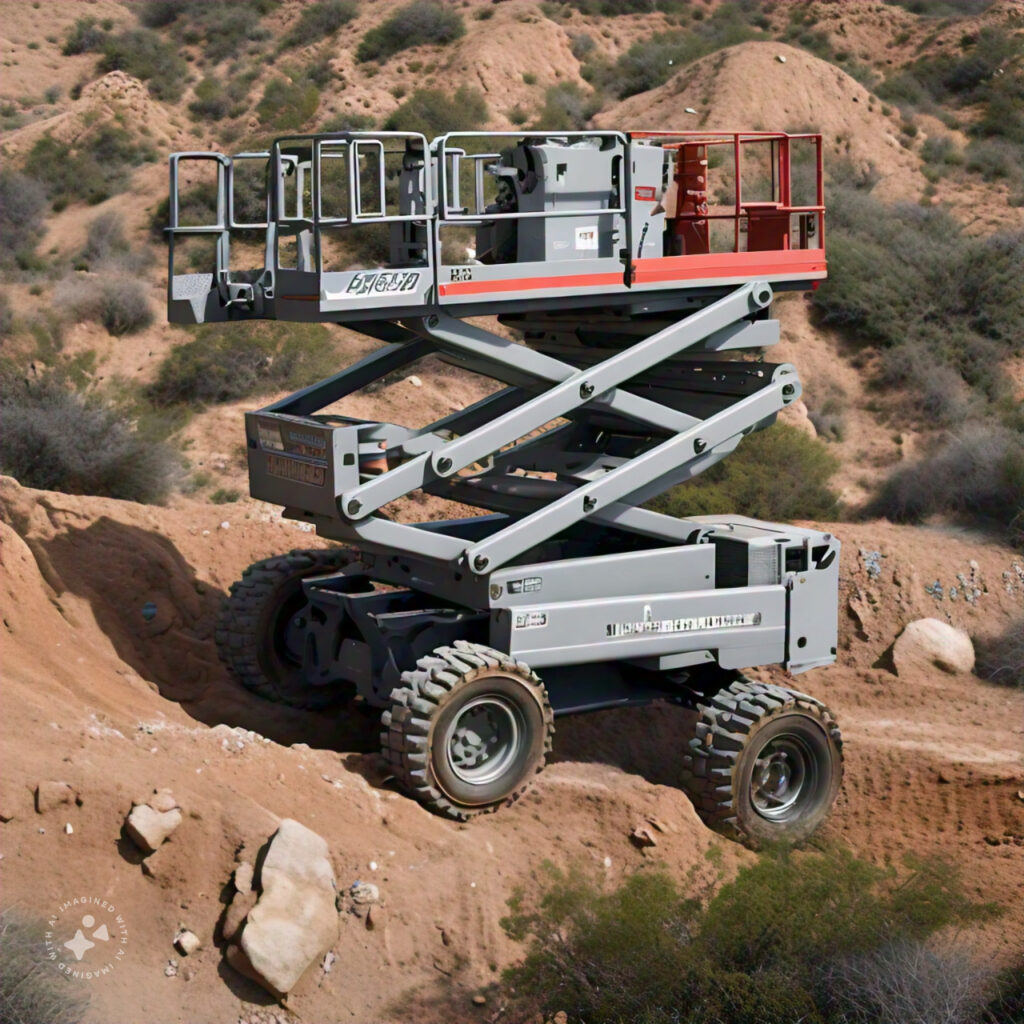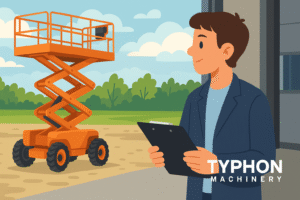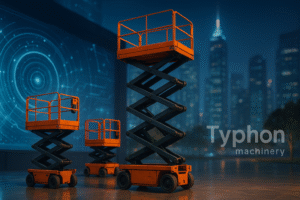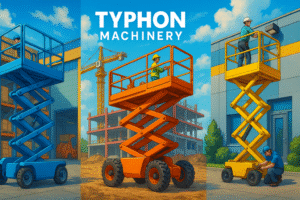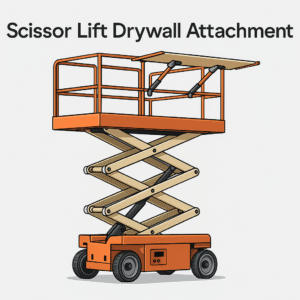Designed for use on uneven or difficult outdoor areas, including building sites or those requiring access to raised positions on uneven ground, a rough terrain scissor lift is a flexible and dependable equipment. This thorough guide will look at its characteristics, advantages, and differences from other aerial work platforms.
Definition and Overview
Designed for giving consistent and safe access to raised work areas on uneven or sloping ground, a rough terrain scissor lift—also known as an all-terrain scissor lift or 4×4 scissor lifts—is an aerial work platform. These machines have strong characteristics like reinforced tires, a four-wheel drive powertrain, good traction control, and tire pressure monitoring, which lets this equipment negotiate difficult outside conditions and finish jobs other kinds of scissor lifts find difficult.
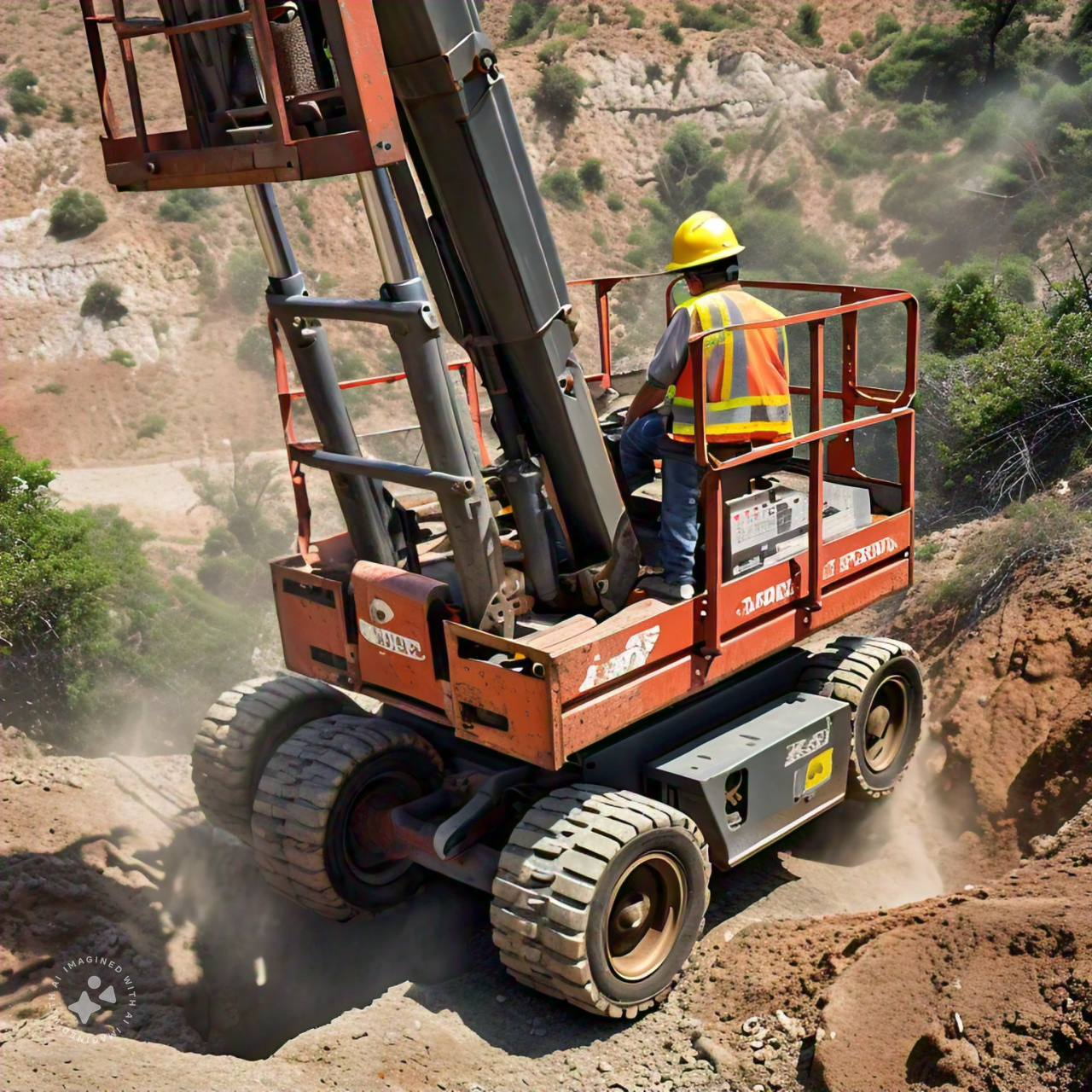
Types of Rough Terrain Scissor Lifts
Modern RT scissor lifts abound on the market that especially fit different work settings and uses. Their power source normally helps one to classify them into two main groups: dual-fuel scissor lifts or electric scissor lifts depending on gasoline or diesel.
Electric Scissor Lifts
Rechargeable batteries run electric scissor lifts, which emit no noise or pollution and fit both indoor and outdoor use. Perfect for confined areas because of their small size and mobility, electric scissor lifts usually provide operating height ranges between 19-40 feet, which makes them flexible in their use for different interior chores.
Gasoline, Diesel, and Dual-Fuel Scissor Lifts
More power and run time than its electric equivalents, gasoline, diesel, and dual-fuel scissor lifts are designed especially for outdoor operation in difficult terrain situations. Their weight capacity is higher than that of electric scissor lifts, and their complete height range usually runs from 26 to 60 feet.
Key Features
All-terrain scissor lifts come equipped with numerous features designed to make them suitable for challenging outdoor environments.
Four-wheel drive (4WD)
Four-wheel-drive systems in RT scissor lifts help to improve good traction control on uneven ground and enable navigation of challenging surroundings.
Reinforced tires
These machines typically include high-performance tires capable to resisting punctures while offering improved traction over uneven surfaces.
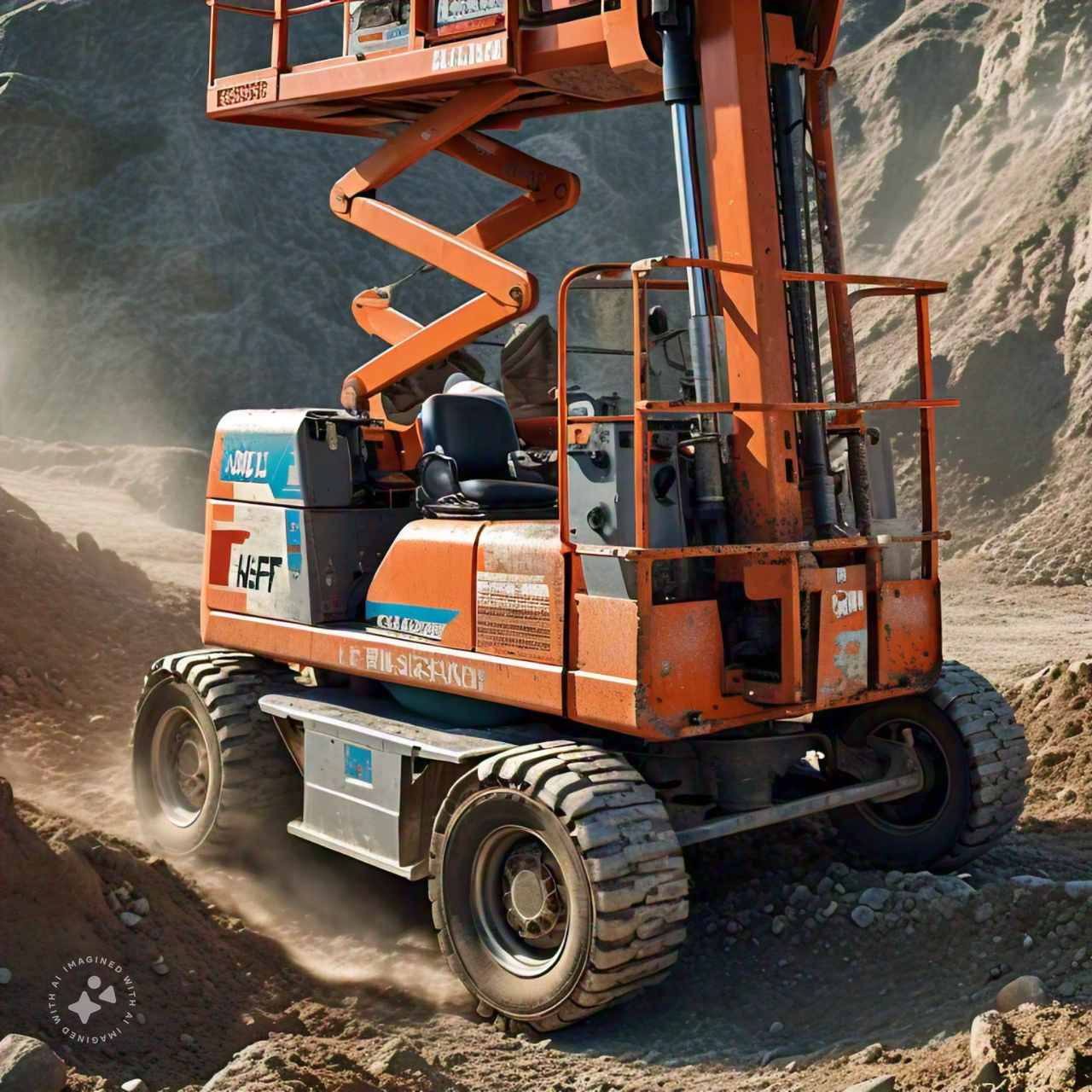
Outriggers
Many tough terrain scissor lifts have outriggers, extendable stabilizers that provide extra support while operating the lift – this makes working on steep or uneven ground more stable and secure, particularly when the extension deck is employed. This capability may be very helpful.
Gradeability
All-terrain scissor lifts can safely traverse slopes up to 40% gradeability, which allows them to safely traverse inclines and perform tasks over uneven surfaces.
Lift capacity
Electric machines often boast greater lift capacities, making them suitable for carrying multiple employees or heavy loads.
Benefits
There are various advantages associated with using a rough terrain scissor lifts in various applications.
Versatility
All-terrain scissor lifts can be used in an assortment of settings, ranging from construction sites and maintenance jobs on uneven or sloped surfaces, all the way through to maintenance projects on irregular grounds.
Stability
These machines are created to offer a secure working platform even in adverse outdoor conditions.
Improved productivity
Transporting workers across difficult terrain to elevated work areas quickly and efficiently can significantly enhance job site productivity.
Safety
Rough terrain scissor lifts come equipped with numerous safety features, such as fall restraints, arrestors, and outriggers to reduce the risks of accidents and injuries.
Specialty Uses and Applications
All-terrain scissor lifts are well suited to perform various tasks and industries.
Construction
These machines are especially suited to construction sites where rough terrain or other challenging conditions exist.
Maintenance
All-terrain scissor lifts can be utilized to perform maintenance work on outdoor equipment and structures such as bridges, towers and buildings.
Landscaping
Lifts such as this one can be utilized for tree pruning and trimming tasks that necessitate reaching elevated areas, as well as landscape projects which necessitate accessing elevated spaces.
Mining and quarrying
Off-road scissor lifts are frequently employed in mining and quarrying operations to provide stable work platforms and access to elevated areas.
Events and entertainment
These lifts can be utilized for setting up stages, lighting systems and sound equipment at outdoor events and festivals.
Factors to Consider Before Renting or Purchasing
Before renting or purchasing a rough terrain scissor lifts, several key points should be kept in mind.
Working height
Establish the maximum height necessary for your specific application.
Lift capacity
Consider how heavy materials and workers will be when choosing scissor lift models.
Terrain and environment
Examine the terrain and weather at your job site to decide whether a rough terrain scissor lift is your optimal solution.
Power source
Choose an electric, gasoline, diesel or dual fuel model depending on the nature and environment in which your work takes place.
Certification and training
Make sure that all operators possess the appropriate certification and training needed for the safe operation of a rough terrain scissor lift.
Safety Considerations and Operator Certification
Especially for inexperienced operators without the training and certification, running a rough terrain scissor lift may be very dangerous. Appropriate safety protocols and training for operators of this equipment must be followed in order to reduce hazards and guarantee their safety under OSHA-mandated compliance certification.
Convenient and reasonably priced methods of obtaining training and certification needed to properly operate difficult terrain scissor lifts are offered by online certification programs like those run by AerialLiftCertification.com. These courses enable participants to finish in one hour, therefore providing operators with all the information and skills needed for safe scissor lifts operation.
Operating a Scissor Lift
To operate a scissor lifts safely, follow these steps:
- Enter the platform using three points of contact for safety.
- Switch the machine into neutral and use the joystick to direct the lift up or down.
- To steer, use the switch on the joystick to move left or right.
- Always wear a safety harness and follow all safety procedures outlined in your training and certification program.
Costs and Rental Options
Renting a rough terrain scissor lift may cost differently based on location, availability, and intended vertical height. A 50-foot machine may cost around $379 per day, $891 per week, or $2,187 per month; a 26-foot platform height model can cost around $154, $409 per day, or $1,008 per month.
Conclusion
Essential equipment for companies needing access to elevated work areas over uneven or difficult conditions, rough terrain scissor lifts provide several benefits including flexibility, stability, and higher production. Understanding important characteristics, advantages, and factors associated to these scissor lifts helps you to decide which aerial work platform best matches your particular need.
Once you know the kind of terrain you will be working on, you may hire the appropriate equipment online on our page. Renting may help you save money when you need equipment but don’t have to keep it when you don’t.

